COFFEE THAT PACKS A PUNCH. WHICH CUP HAS THE MOST CAFFEINE?
Choosing a cup of coffee is a very individual experience. Whether you are looking for a strong pick-me-up in the morning, or need a little burst of energy in the afternoon, we are often looking for just the right amount of caffeine.
Still others are simply interested in identifying the flavors and undertones found in different coffee blends. These coffee aficionados appreciate and enjoy coffee as art lovers would view a fine painting. In any case, it’s good to learn about which coffees have the most caffeine, so you can choose the right coffee for you.
Instead of taking the labels and boxes at their word, you’ll be better off if you learn more about the roasting process, how the caffeine in coffee works, and what exactly makes a cup of joe strong.
Let’s take a look at different types of coffee and what makes them tick.
WHAT COFFEE HAS THE MOST CAFFEINE: A GUIDE TO CAFFEINATION

Caffeine content in coffee has everything to do with the type of coffee beans used, the roasting process, as well as how the drink is prepared.
It’s an equation that has evolved for hundreds of years, resulting in some pretty amazing coffee beverages in the process. At its root, though, coffee is a simple thing to understand.
Don’t be deceived by fancy names and high prices at coffee shops. The reality is that most coffee drinks are a combination of roasted coffee beans, milk, and water. Add to that the endless number of sweeteners, flavors, liqueurs and spices and you have a lifetime of coffee choices to make. At the heart of the process, though, is the roast of the bean.
HOW THE ROAST AFFECTS CAFFEINE
When you choose coffee, you’ll notice that you have to select between a variety of “roasts.”
There is any number of names for these roasts, and a lot of training and work goes into developing specific blends and flavors. Roast masters and tasters are trained in “cupping” to develop blends with different nuances and flavor notes. As we experience different coffees we begin to discover our favorites. So, when you see a French roast, for example, you may know from experience that the roast will provide a specific taste that you enjoy.
The language of coffee, however, can be contrary to our knowledge of caffeine levels. To many a “dark roast” with “bold, intense” flavor may sound like it will be a stronger, more caffeinated coffee. The opposite is actually true – The lighter the roast, the higher the caffeine content. Dark and light roasts taste differently as well.
It may be surprising to learn that the original coffee bean, harvested fresh off of the tree contains its highest level of caffeine. When the beans are roasted, they lose their caffeine power while increasing in flavor. As a result, light roasts contain more caffeine, while dark roasts have a little bit less. Light roasts often carry fruitier, more floral notes, while dark roasts deliver smokier, more chocolatey flavor and aroma.
Aside from the beans and the roast level, there are other factors that can impact the amount of caffeine in a cup of coffee.
LIFE IS ALL ABOUT THE “GRIND.” LEVELS OF GROUND COFFEE

Before preparing a cup of coffee, the beans must be ground. Grinding creates more surface area for the roasted coffee to come in contact with water. As surface area increases, caffeine content also increases.
The finer you grind your coffee, there exists more surface area from which the water can pull flavor and caffeine. When you don’t grind the bean well enough, there’s a lot of surface area that remains tucked into the grounds that may result in a less flavorful cup of coffee.
So, the finer the grind, the more caffeine you can get out of the bean. There is a trade-off, however for a finely ground coffee. An over-ground coffee can result in a cup of coffee with a flavor that can be overbearing. Again this is where personal preference and experience come into play, so that you can find the right balance of flavor and power you want. Now let’s move on to preparation.
PREPARATION AND CAFFEINE
Just as there are unending blends, roasts and flavors, there are seemingly endless coffee makers and brewing techniques. Whether you prefer a simple drip coffee prepared on your kitchen counter or prefer an elaborately prepared masterpiece created by your favorite barista, coffee comes down to two elemental basics – coffee and water. Different methods of preparation indeed impact the kinds of flavors and brilliance, but the basics are pretty simple to understand.
After you’ve ground your beans (and talking about grinders could be another separate conversation), it’s time to add water in one of the hundreds of ways developed around the world and by people of many different cultures. The simplest and most common way is to use a coffee maker.
Today’s mainstream coffee makers are simple to use, effective, and deliver a consistent cup of coffee. That said, they also don’t always extract the ground beans as well as you might want them to. The water coming from inside a standard drip coffee maker typically runs into the grounds and creates a sort of rut. The water then starts to run through those pathways through the ground coffee, then into the pot, leaving a lot of grounds that never get exposed to the hot water. This also can reduce the amount of caffeine in your cup of coffee.
Pour-over coffee, a preparation method that has been trending over the past several years, is another method to maximize flavor. In this process, hot water is manually poured over the grounds, resulting in increased contact between the coffee and hot water.
CIAO BELLO. WHAT ABOUT ESPRESSO?
Espresso beans and coffee beans aren’t really different at all. In fact, they’re the same thing, just prepared differently.Espresso beans are ground finely and pressed into a small area. Where coffee sits loose in the basket of a drip coffee maker, espresso is pressed firmly (tamped) into a puck before pressurized, heated water is infused through the coffee.
The fine grind and pressurization makes espresso drinks smaller and with a higher concentration of caffeine per ounce. They’re a great way to perk up in a matter of minutes.
That said, you may find that many popular chains offer “espresso” drinks that might not adhere to the standards that an independent coffee shop would. While they still may be espresso drinks, they may contain many more ingredients that water down the original bean.
LOOKING FOR GREAT COFFEE?
So, what coffee has the most caffeine? Your coffee. Your choice.
As we’ve discussed, the caffeine level of your coffee depends on a lot of factors – the roast, the grind, the preparation, and more. The beautiful thing is that there are enough coffee options for you to explore for the rest of your life. We’re here to help you on that journey.
Explore our site for different types of coffee beans, ground coffee, and unique coffee roast options that you’re sure to love.


